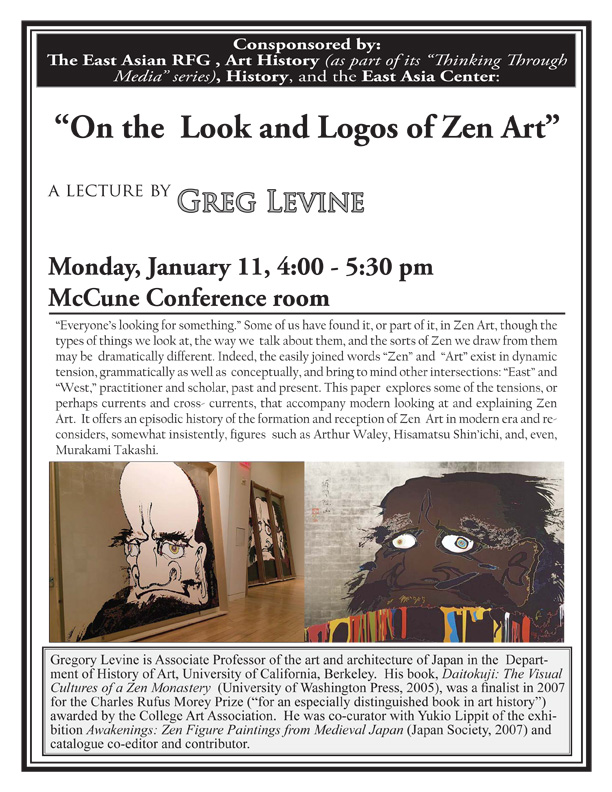11 Jan On the Look and Logos of Zen Art

Greg Levine (Art History, UC Berkeley)
Monday, January 11 / 4:00 PM
McCune Conference Room, 6020 HSSB
“Everyone’s looking for something.” Some of us have found it, or part of it, in Zen Art, though the types of things we look at, the way we talk about them, and the sorts of Zen we draw from them may be dramatically different. Indeed, the easily joined words “Zen” and “Art” exist in dynamic tension, grammatically as well as conceptually, and bring to mind other intersections: “East” and “West,” practitioner and scholar, past and present. This paper explores some of the tensions, or perhaps currents and cross-currents, that accompany modern looking at and explaining Zen Art. It offers an episodic history of the formation and reception of Zen Art in modern era and re-considers, somewhat insistently, figures such as Arthur Waley, Hisamatsu Shin’ichi, and even Murakami Takashi. Gregory Levine is Associate Professor of Japanese art history in the Department of History of Art, University of California, Berkeley. His book Daitokuji: The Visual Cultures of a Zen Monastery was a finalist in 2007 for the Charles Rufus Morey Prize awarded by the College Art Association. He was co-curator with Yukio Lippit of the exhibition Awakenings: Zen Figure Paintings from Medieval Japan and catalogue co-editor and contributor.
Sponsored by the IHC’s East Asian Cultures RFG, the Dept. of Art History as part of its Thinking Through Media series, the Dept. of History, and the East Asia Center.

